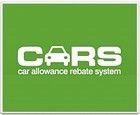The Inconvenient Truth about "Cash for Clunkers:" Each Car Sale to Cost Taxpayers $20k Apiece, Reports Edmunds.com
 |
SEE ALSO: Cash For Clunkers Consumer Guide
EDITOR'S NOTE: I have a little different take on the "inconvenient truth" expressed in the editorial below. My inconvenient truth is that I'm continually shocked by the lack of any deep or real thinking by those considered stalwarts of the automotive media. To be fair, I donít think that Edmunds or Kelley was ever a content heavyweight, since all they were were suppliers of pricing statistics. But, as their involvement in the Internet grew, and they started dumping huge monies on trying to make themselves into general information portals, car dealers and consumers have been led astray into thinking that thereís more there, there. But the ďtruthĒ is that they didnít come prepared for the fight (a reference to an old quote about someone coming to an intellectual debate and not having the weapons for the job). Consequently, what you get is half-baked ideas or unnecessary agitation over things that are irrelevant.
Yes, itís true that in this universe 2 plus 2 equals 4. And that $1 billion (the allocated amount in the Cash for Clunkers program) divided by $4,500 (per vehicle on the high end) equals about 222,000 vehicles that will get accepted in the program; which over the roughly four months that the program is in effect will only translate to about 50,000 new vehicles sold per month. And when you consider that in a normal year, when some 16 million new vehicles are sold in the U.S., that 50,000 new vehicles is a puny 3% of normal monthly sales, you realize that this program is primarily all hype and that it has less than a snowballís chance in hell in helping to restart the retail automotive industry, and even less the economy. So, whatís the point of bringing attention to this? Just to alert the American taxpayer that he/she is paying a couple ten thousand dollars to get someone a new vehicle? Yeah, so what?
We, the American taxpayers, have just thrown away trillions on bailout programs that are having no more effect on the overall economy than the Cash for Clunkers program will ultimately have. So whatís the big deal, whatís another $1 billion? Why is that an inconvenient truth? Will the mere acknowledgment, or saving $1 billion from being wasted have any great meaning? No. Itís merely the Administration and Congressí inept swipe at doing something to help. The program wonít amount to a hill of beans, and Edmundsí Inconvenient Truth is another wasted breath.
Whatís needed to help turn the economy of the country and the world around is not simple arithmetic
or a less than convenient fact, nor is it a bailout program that rewards Wall Street gonifs. What are needed
are real business plans that can establish new industries, new products, new jobs, and new flows of
development and sales dollars. This wonít happen overnight, but the longer we look to ill-conceived
bailout plans and waste time on red-herring warnings the longer it will take to get where we need to
be. Enhanced "employee pricing" schemes are way too little, way too late. Donít depress us with meaningless
arithmetic, impress us with bold initiatives. You donít have the weapons for the fight, so stay out of the schoolyard.
Marc J. Rauch
Exec. Vice President/Co-Publisher
SANTA MONICA, CA - July 27, 2009: Much has been written – both pro and con – about the Cash for Clunkers program that officially launches today. Complexity, limited eligibility and†minimal funding are common criticisms. But so far, the chief failing has been overlooked. Edmunds.com, the premier online resource for automotive information, has determined that even if Cash for Clunkers reaches its budgeted cap, the program will only help drive about 50,000 incremental new car sales, so each one will cost taxpayers a whopping $20,000.
How is this possible? Edmunds.com’s research shows that typically 200,000 vehicles worth less than $4,500 are traded in for new vehicles every three months. At best the current Cash for Clunkers program will fund 250,000 such transactions in the same time period—a gain of only 50,000 vehicles. Given that this program is budgeted to cost $1,000,000,000, this increase will come at the cost of $20,000 per extra sale.
“The incremental sales will be limited and at a considerable cost. In effect, we are paying consumers to do something most would do anyway,” said Jeremy Anwyl, CEO of Edmunds.com. “So as a stimulus, the program fails. One could make a slightly stronger argument about the environmental benefits, but even there, the program could have been better designed.”
“Really, the best consequence is that many consumers are getting interested in the idea of a new vehicle after hearing about Cash for Clunkers; we have to hope that even if they don’t qualify, they will buy a vehicle anyway,” Anwyl told Edmunds’ AutoObserver.com. “But, how long-lived will that be? Once the program reaches its cap, interest will die down, and sales volume will fall as quickly as it rose. What will motivate shoppers to brave the marketplace in the months following Cash for Clunkers?”
Automakers must step up to continue the momentum. Anwyl points to the current Chrysler incentive program as an example of a creative marketing message that uses the Cash for Clunkers buzz to generate sales and to arm Chrysler dealers with a useful tool when working with Cash for Clunkers “rejects.”


